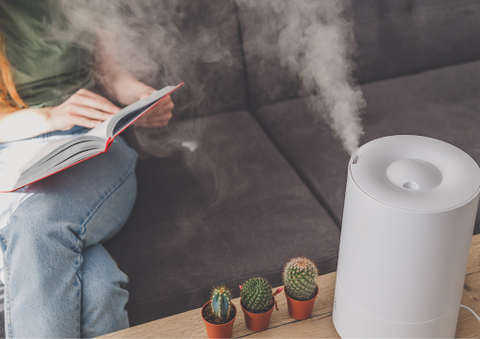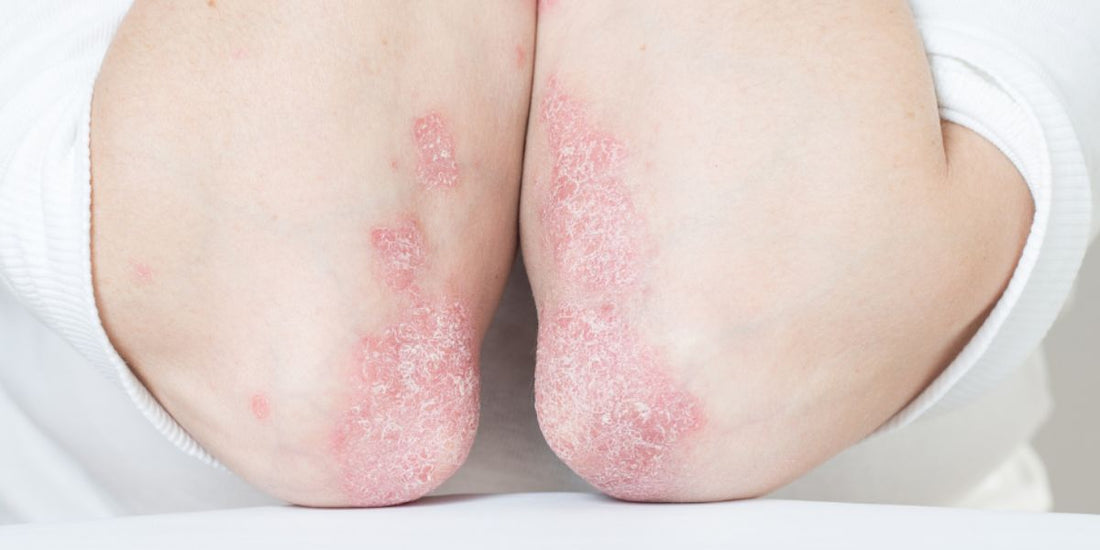If you live with psoriasis, you’ll know that dry air and low levels of exposure to sunlight’s ultraviolet rays could worsen the symptoms throughout the winter months.
Not only could the dry, cold winter air rob your skin of the precious moisture it needs, but you’re also less likely to see the sun too - which helps to keep rapid skin cell growth at bay.
Luckily, there are things you can do throughout the colder months to help treat your symptoms (short of jetting off to warmer climates!).
We’ve rounded up some practical tips and advice which could help you manage your psoriasis better during these challenging months
1. Invest in a humidifier

We’ve mentioned that dry air can lead to further irritations on your skin. Keeping the humidity levels in your home atmosphere normal can help this.
If possible, use a humidifier at work too, or wherever else you spend prolonged periods of time.
Not only that, humidifiers can also help with dry sinuses, bloody noses and cracked lips.
Just make sure you keep your humidifier properly maintained and clean. They can provide the perfect home to bacteria and mould that wouldn’t be so good to breathe in.
2. Keep your home warm

The current cost of living crisis has forced many of us to forgo adequate heating our homes. However, the ramifications for our health also need to be considered. You cannot put a price on your health, after all.
- Rather than turning your heating off altogether, try turning your thermostat down instead.
- Invest in draft excluders to block out the cold air flowing through doors and windows.
- Get thicker curtains for your windows and doors, especially if your glass is only single-glazed.
3. Ensure you have a balanced, healthy diet

As you may already know, here at AxisBiotix, we’re big believers in the power of the microbiome and the impact we can have on our skin through harnessing it.
Our diet has a huge role to play when it comes to the health of our gut microbiome and as a result, our skin health.
You may want to think about reducing your intake of inflammatory foods that are high in sugar, saturated fats, gluten and also dairy products too. Instead, following an anti-inflammatory diet can help tremendously as these foods contain properties known to ease inflammation.
Fresh fruit and vegetables, fish, whole grains and foods which contain unsaturated fats are all anti-inflammatory.
Here are some especially good foods to eat during winter:
- Oily fish
- Avocado
- Walnuts
- Sweet Potatoes
- Peppers
- Broccoli
- Dark Chocolate
- Grapes
4. Keep a journal to track your flare ups

Tracking your flare ups can give you a good idea of what might be triggering them. Perhaps you’ve felt under the weather or your diet has changed recently.
Whatever pattern you may notice, it should be a good indicator of what you may need to change in your life to help relieve your psoriasis.
5. Choose a soothing bath over a hot shower

Although it may be tempting to jump straight into a hot shower to warm up during these colder months, the hot water could actually remove moisture from the skin.
If you are going to shower, just make sure it’s not boiling hot and only long enough to soap up and rinse off.
Instead, a lovely warm bath to unwind may be a better option, but keep this short and sweet too. The NPF also claims that epsom salts and dead sea salts may help to remove psoriasis scales and soothe itchy skin so maybe pop these in your bath too.
6. If you’re layering up, opt for soft materials

Cold weather may irritate your psoriasis, so it’s really important to wrap up warm when you’re heading outside. Extra layers can really add warmth, but it’s important to choose the right materials for the right layers.
Three layers to help keep you warm include;
- Base — a material with the ability to wick sweat away from your skin is important. A cotton shirt, for example, will absorb the moisture fine, but it won’t evaporate.
- Middle — This of this as your insulation. Items like fleeces, which are quite breathable or sweatshirts and hoodies work well.
- Outer — Your protective layer that faces the elements. Opt for something waterproof here, such as your regular winter coat. If you’re able to and the wind is howling, a Gore-Tex outer can help and has the added benefit of being pretty breathable.
7. Drink plenty of water

Drinking water is essential to locking in all that moisture and sometimes we forget to drink enough of it during the winter. UK guidance suggests drinking 1.2 litres of fluids per day, which can come from a variety of sources (read more about this here).
Or simplify your life and get yourself a bottle with lines that indicates how much water you should have consumed throughout the day.
The one pictured above is favourite of ours - find it here.
8. Keep those stress levels low

Winter is often accompanied by higher stress levels and studies have shown that this increase can lead to flare ups, so make sure you carve out some time for yourself each day.
A little bit of light exercise such as yoga will go a long way to releasing any pent up stress. Meditation is also a great way to escape the stresses of the day for 10 - 15 minutes and will positively impact the rest of your day too.
Follow us on social media for more tips and advice when it comes to skin health…
You can find us on Instagram using our handle @axisbiotix, over on Twitter, Facebook, LinkedIn & now TikTok!

